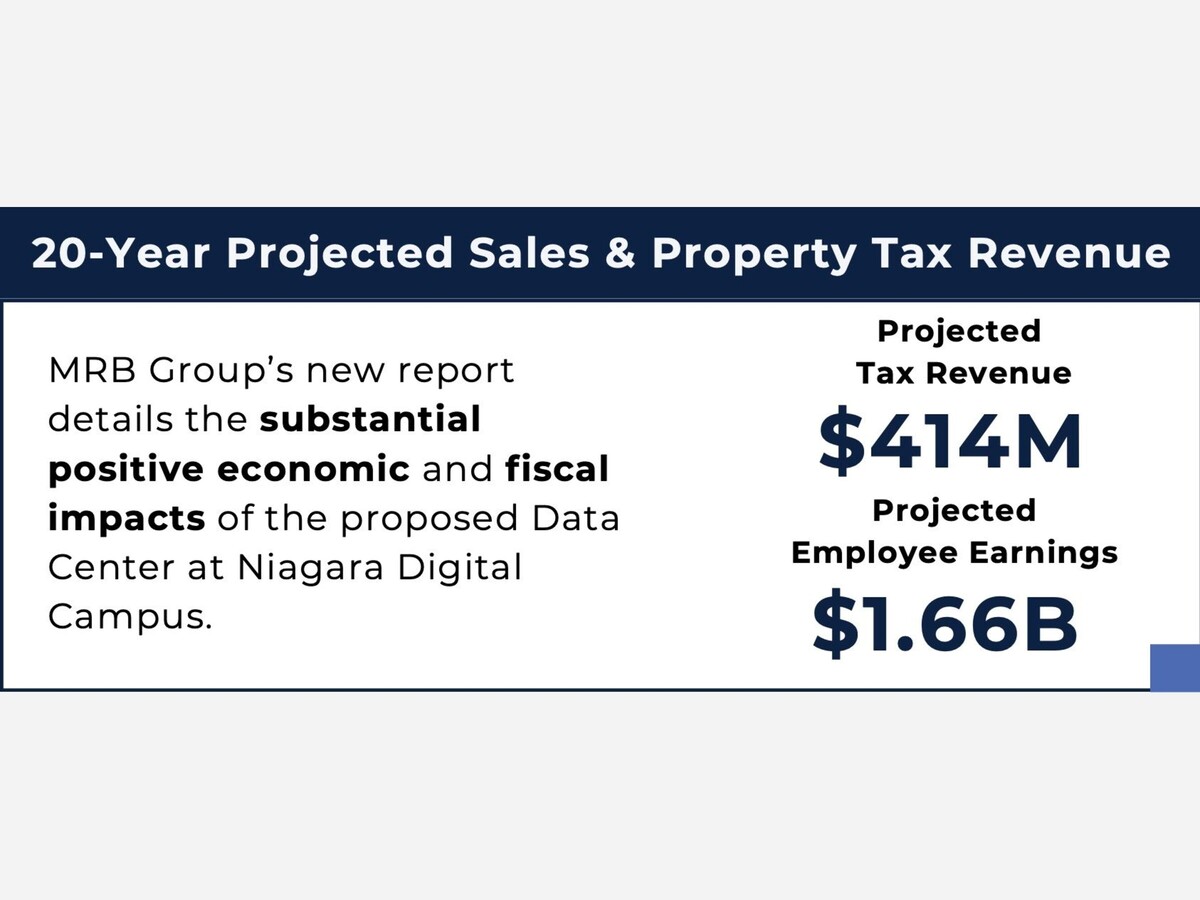Image

(Editor's note: Niagara Falls Redevelopment has been sitting on land and making promises in Niagara Falls for more than 25 years and has built nothing. It issued this economic development study last week for the proposed Urbacon Data Center. Niagara Falls has a competing plan for the parcel in question. Mayor Robert Restaino has spent in excess of $90,000 on legal fees to try and use eminent domain to take the property and build a multi-purpose event center which would be home to a Junior Hockey League franchise. The city has released no study on the feasibilty of the event center or the location, which is adjacent to the Seneca Niagara Casino and a half-mile away from the entertainment district. At the time the Centennial Park plan was announced construction was estimated to cost $150 million. Inflation and the increased cost of construction materials mean a more realistic cost estimate is like $200 million of more which the city does not have.)
Niagara Falls Redevelopment (NFR) and MRB Group Announce Release of MRB’s new study: Niagara Digital Campus: Economic and Fiscal Impact
Study estimates more than $414 million in additional tax revenues over 20 years, a savings of about $730 per year for the “typical” Niagara Falls homeowner; Job revenue earnings are estimated to top $1.66 billion over 20 years, supporting almost 1,000 jobs per year on average
March 25, 2025 (Niagara Falls, NY) – Niagara Falls Redevelopment (NFR) and MRB Group – a leading engineering, architecture, and municipal planning company – are pleased to announce the release of MRB Group’s new report detailing the substantial positive economic and fiscal impacts of the proposed Data Center at Niagara Digital Campus in Niagara Falls, New York.
The 24-page report highlights tax revenue, job creation, and economic spin-off benefits that will be generated by the $1.5 billion Niagara Digital Campus data center, including property and sales tax revenues that will accrue to Niagara County, the City of Niagara Falls, the Niagara Falls City School District, and the State of New York.
In partnership with Urbacon Data Centre Solutions Inc., the Toronto-based developer and operator of award-winning data centers, NFR’s proposed 1.2 million square foot, 140 Megawatt, high-capacity data center will be comprised of nine buildings, equipped with state-of-the-art server halls, network infrastructure, office space, and mechanical/electrical support areas.
The new MRB report commissioned by NFR provides a comprehensive examination of the direct and indirect economic impacts and tax revenues the proposed development will bring through employment, capital expenditures, and estimated energy usage.
Billions in Tax Revenues and Economic Benefits
New property, gross receipts and sales tax revenues include property taxes to be paid on improvements to the site, as well as sales and gross receipt taxes associated with the project’s energy use. Over 20 years, the total additional taxes generated by the project is estimated at more than $414 million. The new MRB study breaks down these tax revenues as follows:
To help illustrate what the overall impact of the Data Center at Niagara Digital Campus means to local residents, MRB translated property tax savings to a “typical” owner of an average-priced single-family home. The typical homeowner will save approximately $14,603 over 20 years, which equates to an average of approximately $730 per year (savings are defined as revenues that the City and the School District otherwise would have to collect via their respective tax levies).
As to employment, according to the report, over the course of 20 years, the Data Center at Niagara Digital Campus will support 19,238 job-years (which is inclusive of construction jobs, permanent jobs, and indirect jobs), $1.66 billion in earnings. This equates to an average of 962 jobs with $83 million in earnings each year.
“This report confirms everything that we have said since the beginning: the Data Center at Niagara Digital Campus is the best investment the city can make, one that will create technology jobs, tax revenues and prosperity for generations to come,” said Roger Trevino, Executive Vice President of Niagara Falls Redevelopment (NFR). “With our partners at Urbacon, we are ready to begin today, and look forward to working with the City to make this project a reality.”
“This is a comprehensive analysis utilizing industry-leading economic impact modelling software,” said Michael N’dolo, National Director of Economic Development Services at MRB Group. “The benefits to the community are unquestionable, and we hope our work furthers the understanding of the tax revenues, job creation and other economic benefits that will accrue to the people of Niagara Falls as a result of the Data Centre at Niagara Digital Campus.”
MRB Group is a well-respected Western New York engineering, architecture, and municipal planning company. MRB previously worked on notable Western New York projects that include the Comprehensive Economic Development Strategy for Erie County, the Finger Lakes Regional Economic Development Council’s most recent Economic Development Strategy, and an Advanced Industry Clusters study for Empire State Development.
Dennis Elsenbeck, formerly of National Grid and now a consultant to the Niagara Digital Campus project, said: “In addition to the tax revenues generated from sale of electricity to the data center, the 24/7 power use will significantly broaden the base of ratepayers in the city. In addition, NFR and Urbacon will spend tens of millions on a new substation and upgrades to transmission lines. All of this should exert downward pressure on future electrical rates.”
In addition to its release to the public, the economic impact information contained in the MRB Report will also be included in the forthcoming submissions to the City to address the proper zoning for the location of the Data Center at Niagara Digital Campus.
The full 24-page report can be found https://niagaradigitalcampus.com/